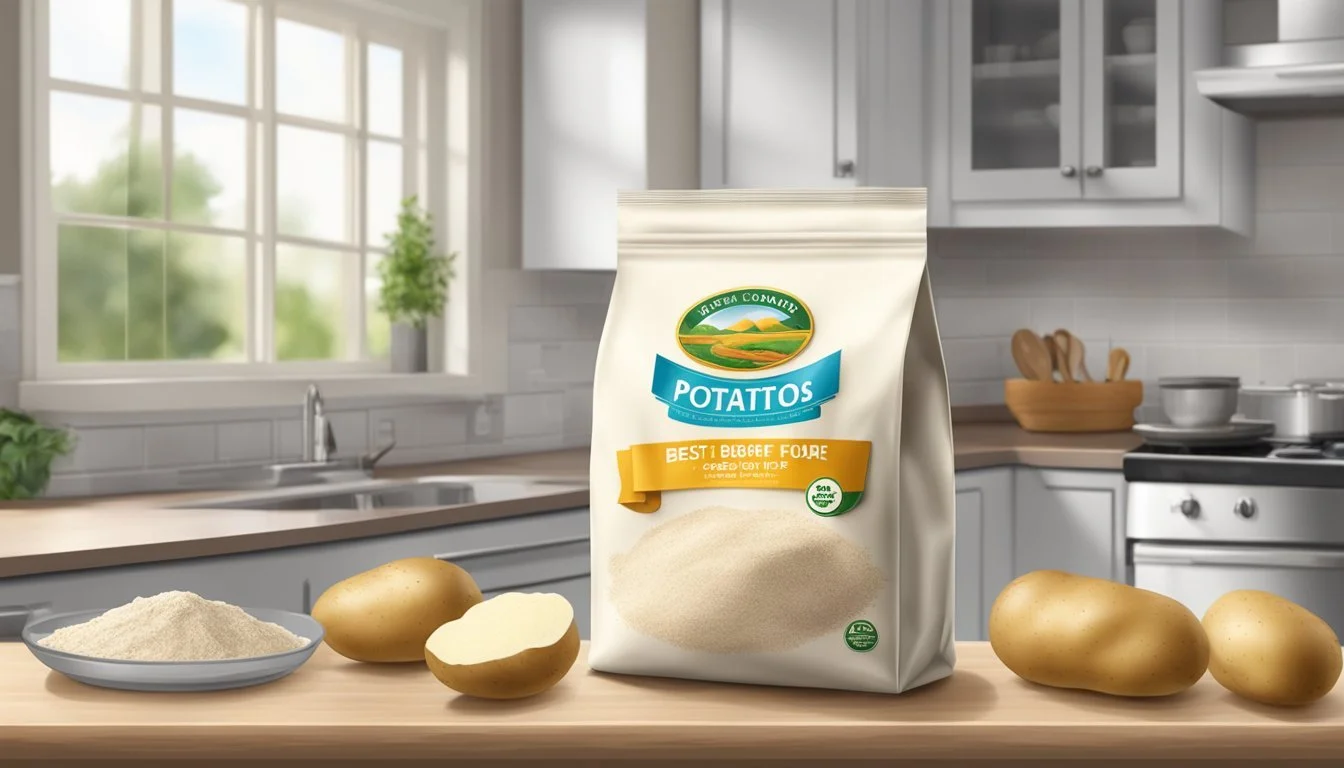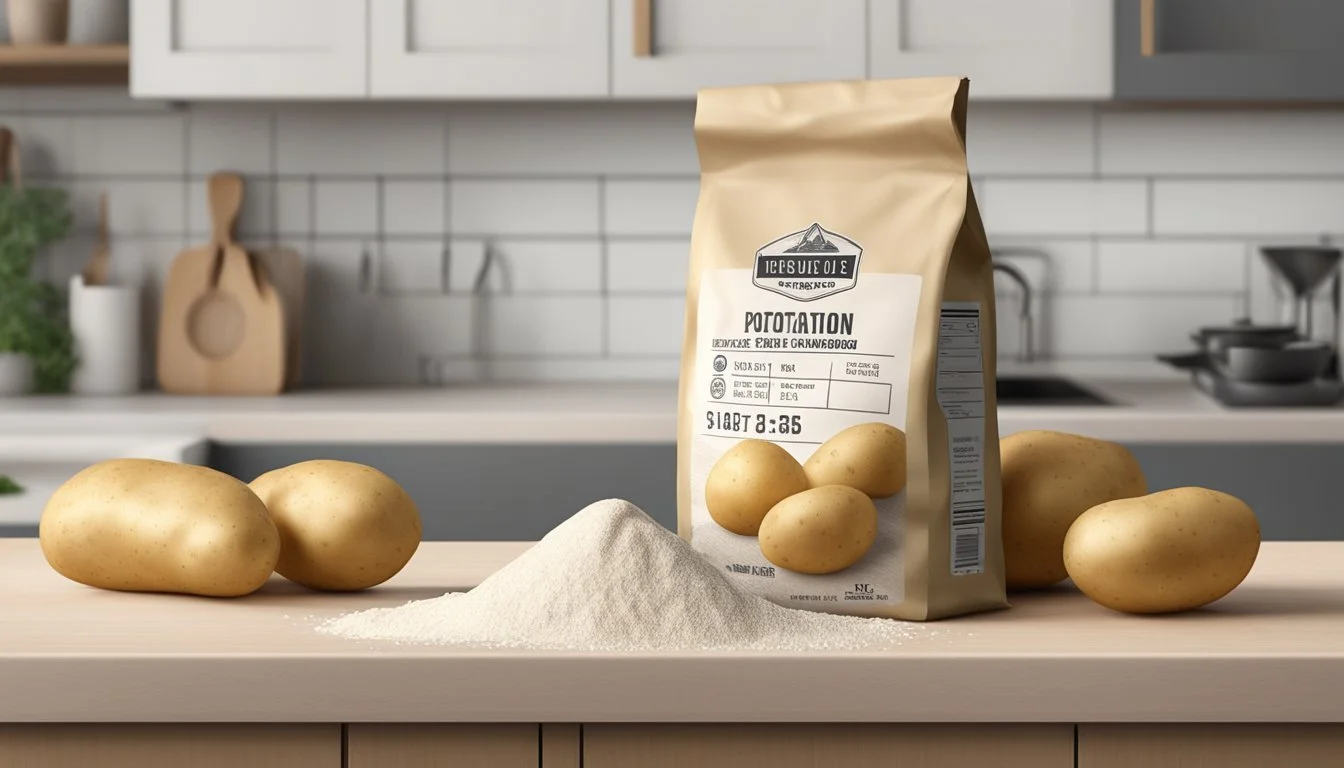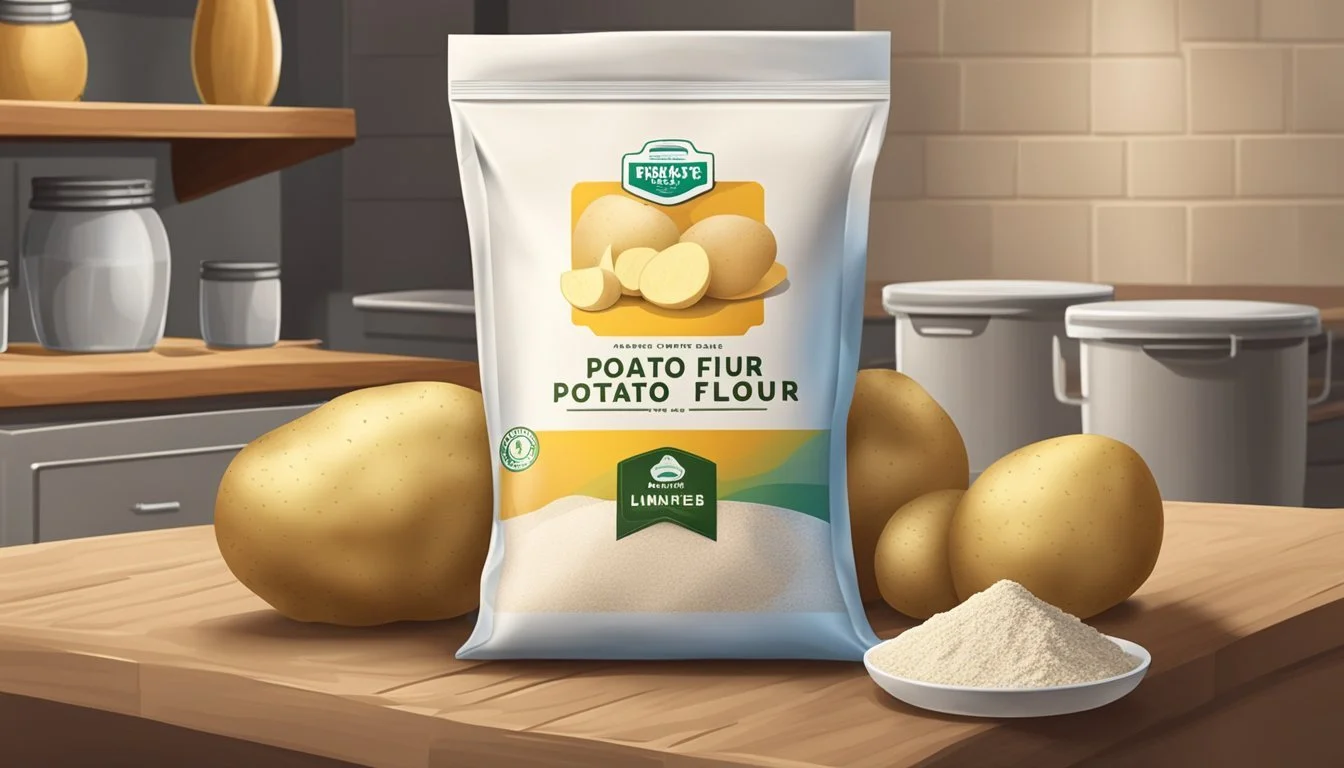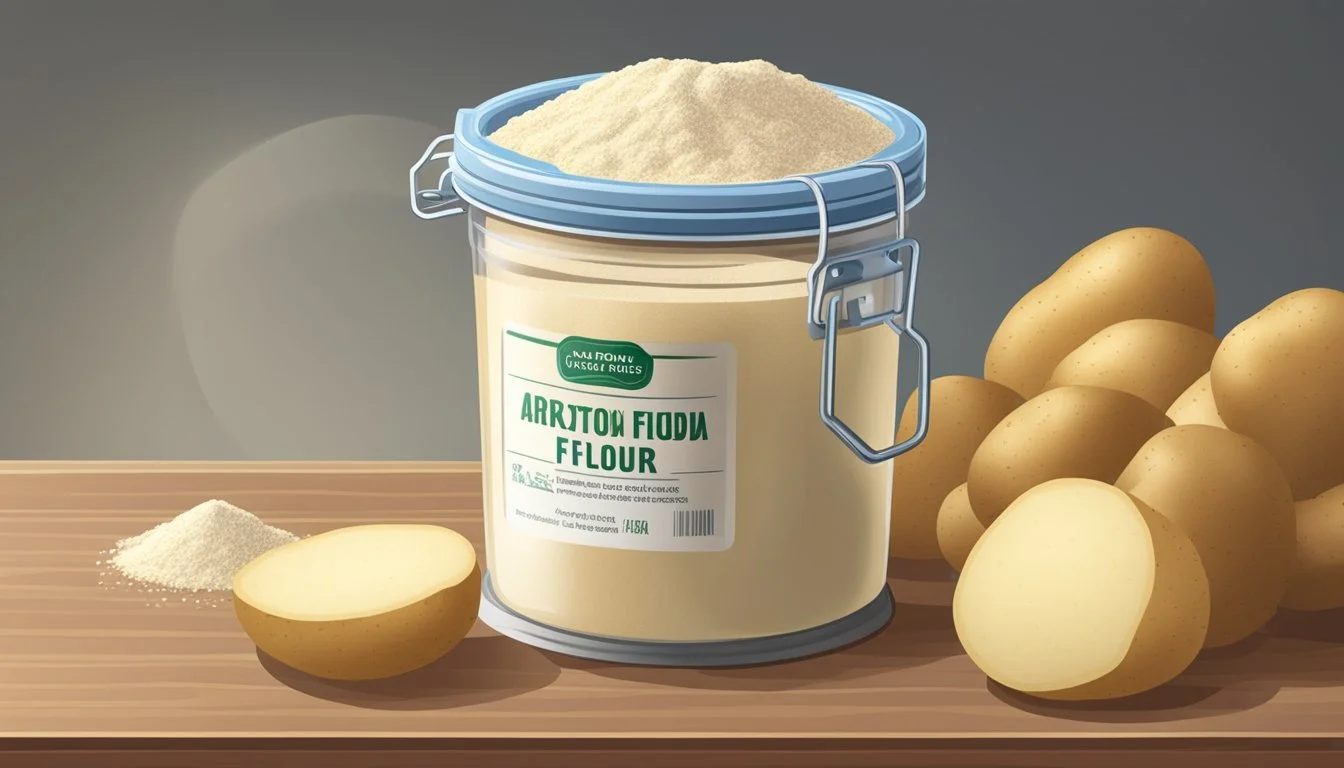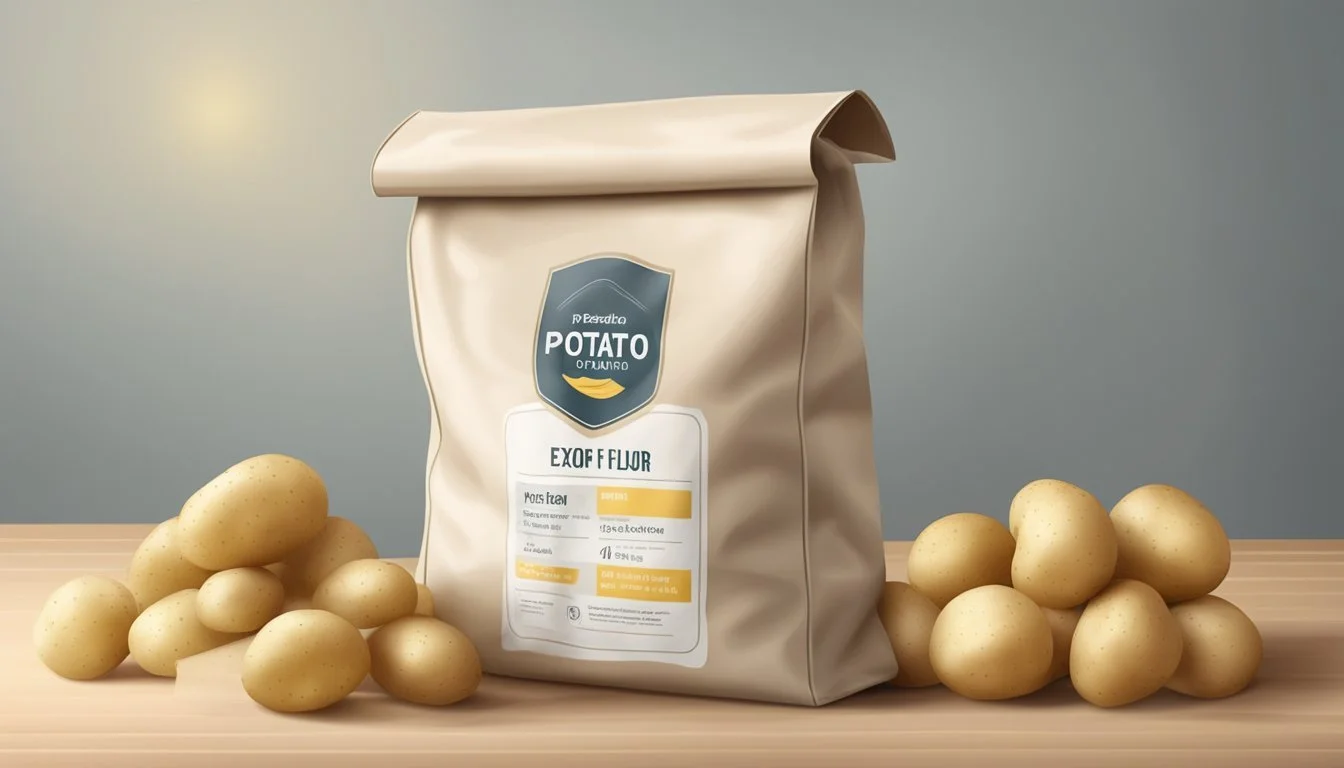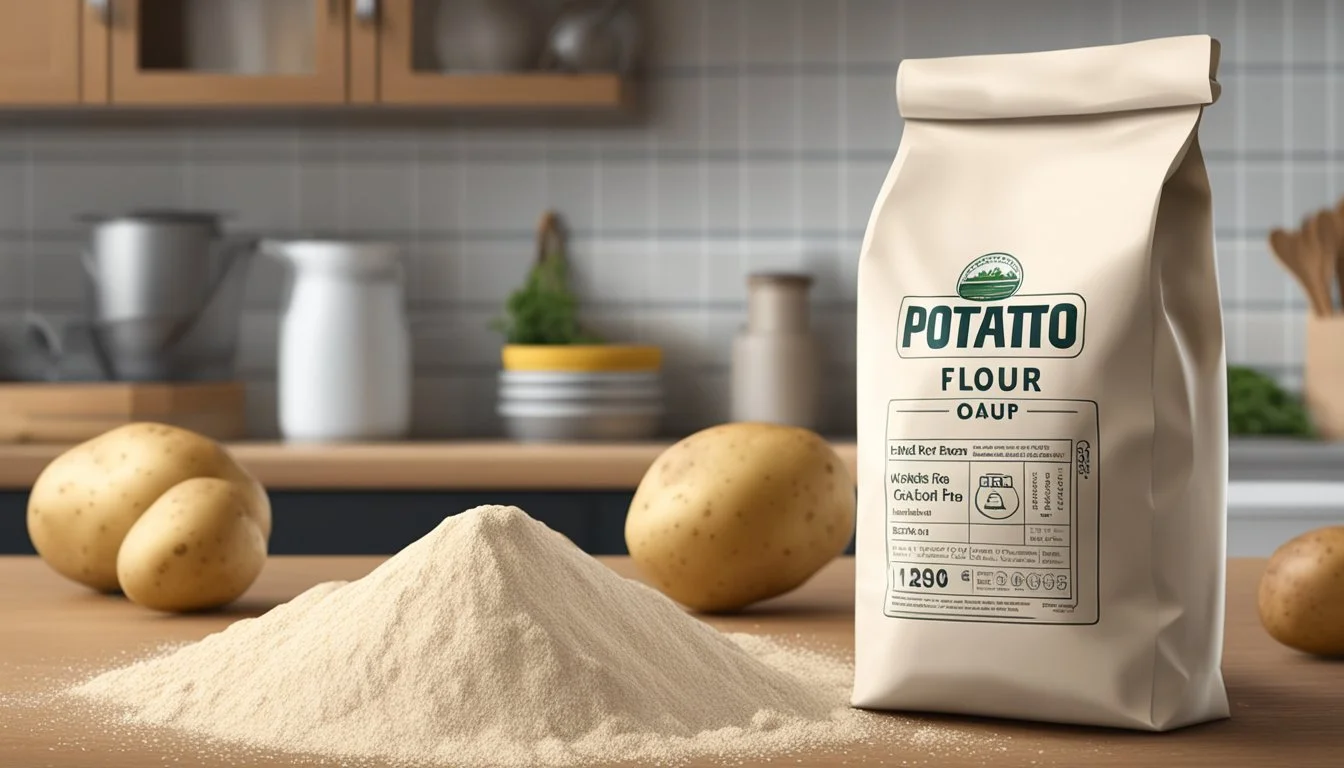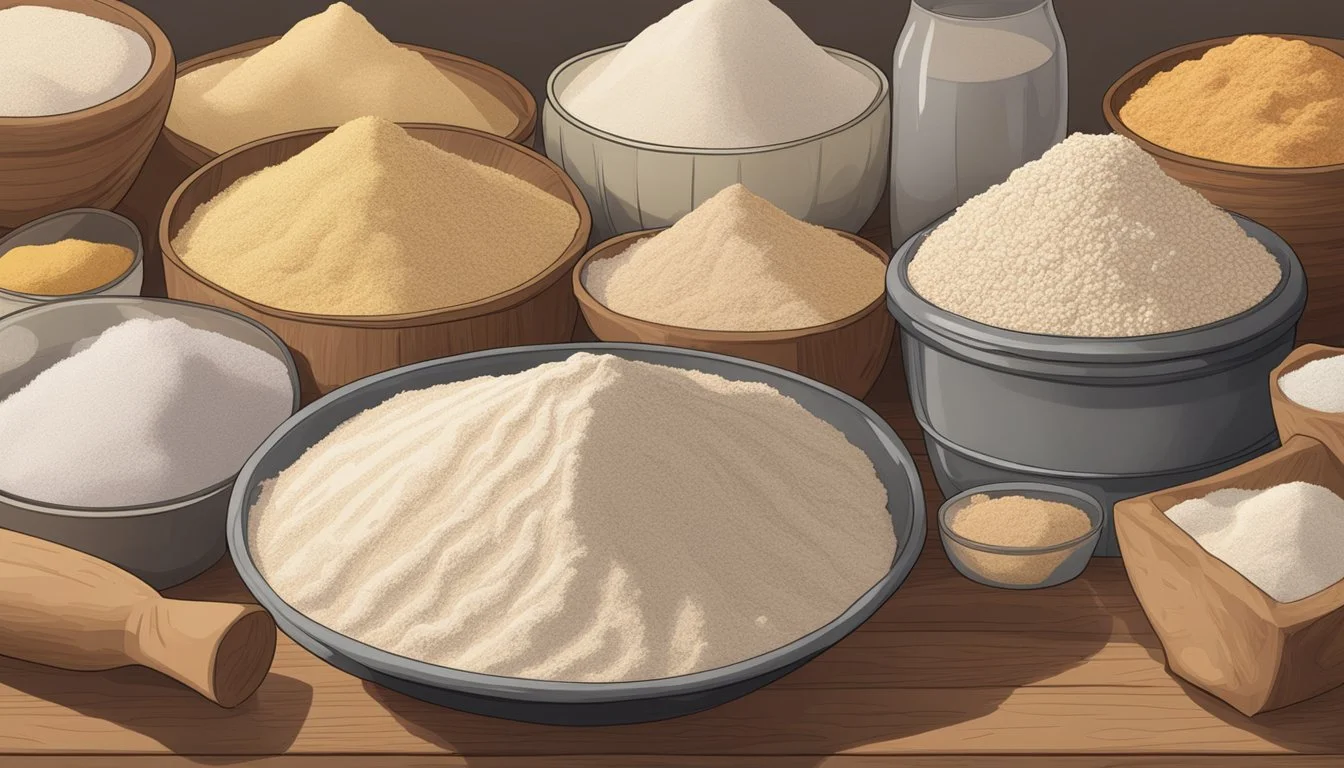Does Potato Flour Go Bad?
Shelf Life and Storage Tips
Potato flour, a versatile gluten-free alternative to wheat flour, indeed can go bad. Under ideal storage conditions, potato flour can last up to 12 months, making it a reliable pantry staple for many households. However, once opened, exposure to air and moisture can significantly reduce its shelf life to around 2-3 months.
A key indicator that your potato flour has gone bad is a sour or rancid smell, a sign of oxidation or spoilage. Using spoiled flour can negatively affect the taste and safety of your dishes. Proper storage, such as vacuum sealing and freezing, can extend the shelf life of potato flour up to 3 years, helping you get the most out of this essential gluten-free flour.
Understanding Potato Flour
Potato flour is a versatile ingredient often used in gluten-free cooking and baking. It is derived from whole potatoes and offers unique characteristics that make it valuable in various culinary applications.
Characteristics of Potato Flour
Potato flour is made by cooking, drying, and finely grounding whole potatoes. This process retains most of the potato's natural starch and nutrients. It has a slightly off-white color and a mild, earthy flavor.
One of the key attributes of potato flour is its high starch content. This gives it good moisture retention properties, making baked goods tender and moist. It is also gluten-free, providing an alternative for those with gluten sensitivities or celiac disease. Potato flour should not be confused with potato starch, which is a more refined product with different culinary uses.
Common Uses in Cooking and Baking
Potato flour is a staple in gluten-free baking due to its binding properties and ability to retain moisture. It works well in recipes such as breads, cakes, and cookies. It’s often used in combination with other gluten-free flours to achieve a balanced texture.
In cooking, potato flour can be used to thicken soups, stews, and gravies. It’s also a key ingredient in making certain types of dumplings and gnocchi, providing a light and fluffy texture. For recipes that require a dense and moist consistency, potato flour is an ideal choice, particularly in vegan and gluten-free culinary applications.
Factors Influencing Potato Flour Longevity
Potato flour shelf life is affected by various external conditions. Key factors include temperature, moisture, light, and exposure to oxygen, all of which can significantly alter its longevity.
Effect of Temperature on Potato Flour
Temperature plays a crucial role in determining the shelf life of potato flour. Storing it at room temperature (20-25°C or 68-77°F) can keep it viable for 6-8 months if unopened. Cooler temperatures are better for extending its usability. For maximum shelf life, vacuum-sealed potato flour stored in the freezer can last up to 3 years. High temperatures accelerate spoilage by increasing the likelihood of moisture condensation and microbial growth.
Impact of Moisture and Light
Moisture and light are detrimental to the shelf life of potato flour. Exposure to moisture can lead to clumping and microbial growth, causing spoilage. A dry, dark cupboard is ideal for storing unopened potato flour. Light exposure, especially sunlight, can degrade its nutritional quality and lead to rancidity. Using airtight containers in a cool, dry, and dark environment helps maintain its quality.
Oxygen and Storage Conditions
Oxygen exposure accelerates the oxidation process in potato flour, leading to spoilage. Sealed packaging is essential to minimize contact with air. Unopened potato flour in its original packaging can remain fresh for about a year. After opening, transferring the flour to an airtight container reduces oxidation risks. Optimal storage conditions also involve keeping it in a cool, dry place to prevent spoilage and maintain its texture and flavor.
Proper Storage Solutions
Proper storage of potato flour significantly influences its shelf life and quality. Effective methods include using airtight containers and appropriate temperature controls, such as refrigeration or freezing.
Airtight Containers and Pantry Storage
Using airtight containers is crucial for maintaining the freshness of potato flour. Airtight containers prevent exposure to air and moisture, which can lead to spoilage. The pantry should be cool, dry, and away from direct sunlight. Ideal temperature ranges for pantry storage are between 20-25°C (68-77°F).
Store potato flour in tightly sealed bags or containers to avoid contamination. Label the containers with the purchase date to keep track of their shelf life. Following these steps helps maintain the flour's quality for several months.
Refrigeration and Freezing Options
Refrigeration can extend the shelf life of potato flour up to 8 months. Store the flour in airtight containers to protect it from moisture and odors. Refrigerators should maintain a consistent temperature to ensure freshness.
Freezing provides the longest shelf life, up to 3 years. Vacuum-sealed bags are highly recommended for freezing, as they prevent freezer burn and moisture. Remember to label each bag with the date.
When using frozen potato flour, allow it to gradually reach room temperature before use. This method helps retain the flour's quality and usability for extended periods.
Identifying Spoilage and Preventing Food Waste
Potato flour can spoil if not stored properly, leading to unpleasant odors and potential health risks. Knowing how to identify spoilage signs and properly store potato flour can help prevent food waste and ensure safety.
Signs of Spoilage in Potato Flour
When potato flour spoils, it often exhibits distinct signs. A sour or rancid odor is a common indicator. Potato flour that smells musty or off has likely gone bad. Fresh potato flour should have a mild, neutral scent.
Discoloration is another sign; flour that has turned from its usual pale, creamy color to a darker hue should be discarded. Check for mold growth as well. Any visible mold can contaminate the entire batch, making it unfit for use.
Food Safety Concerns
Using spoiled potato flour poses food safety risks. Consuming flour that has gone rancid or moldy can lead to foodborne illnesses caused by pathogens. These illnesses can cause symptoms like stomach pain and vomiting.
Proper storage is crucial to maintain freshness and safety. Store potato flour in an airtight container in a cool, dry place to minimize moisture and light exposure. Vacuum sealing and freezing can further extend its shelf life, reducing the likelihood of rancidity and spoilage. Regularly checking for spoilage signs ensures safe usage and helps prevent food waste.
Lifespan of Potato Flour
Potato flour has a varying shelf life depending on storage conditions and packaging. Proper storage can significantly extend its usability, while signs of spoilage indicate it should be discarded.
Shelf Life and Expiration Dating
Potato flour, when unopened and stored under optimal conditions, can last between 6 to 12 months. A best-by date is often printed on the packaging, guiding consumers on the expected freshness period.
If stored in a cool, dry place away from light and moisture, it remains shelf-stable for a longer duration. Once opened, the flour is exposed to air and moisture, which can accelerate spoilage, reducing its shelf life to around 2 to 3 months.
Freshness and Quality Over Time
Fresh potato flour has a light, powdery texture and a neutral smell. Expired flour often develops a sour or rancid odor and may clump together due to moisture exposure.
Over time, even within its shelf life, the quality may degrade, compromising the flour's performance in recipes. To maintain quality, it is recommended to store flour in an airtight container, and for long-term storage, vacuum sealing and freezing can extend the lifespan up to 3 years. Storing the flour correctly ensures it remains a reliable ingredient.
Comparison with Other Flours
Potato flour differs from other flours primarily in its gluten-free nature and unique nutritional profile, making it a versatile option in both gluten-free and traditional baking contexts.
Potato Flour Versus Wheat-based Flours
Potato flour is distinct from wheat-based flours such as all-purpose flour, bread flour, and whole-wheat flour. One significant difference is that potato flour is gluten-free, whereas wheat-based flours contain gluten, essential for texture in bread and pastries.
In terms of nutrition, potato flour is high in carbohydrates and relatively low in protein compared to wheat-based flours. For instance, potato flour has around 38g of carbohydrates per ¼ cup, whereas all-purpose flour contains about 24g. Wheat flours typically have higher protein content—vital for elasticity in dough—making them superior for bread making.
The moisture-retaining properties of potato flour are also worth noting. This makes baked goods soft and moist, but it may necessitate adjustments in recipes, especially those originally designed for wheat flour.
Gluten-free and Alternate Flour Types
Potato flour stands out among other gluten-free options like coconut flour, almond flour, nut flours, and whole-grain flours such as rye. Unlike coconut or almond flour, which have higher fat content, potato flour is rich in carbohydrates and lower in fats.
When compared to other starch-based flours, such as tapioca or rice flour, potato flour provides a denser, moist texture. This makes it a favored choice for creating hearty gluten-free baked goods. However, using potato flour alone can sometimes lead to a gummy texture, so it is commonly mixed with other gluten-free flours to achieve better results.
Additionally, cake flour and whole-grain flours add diversity to the gluten-free baking scene, but potato flour's unique characteristics can enhance flours like rye and whole-grain flours by contributing moisture and a different flavor profile.
Best Practices in Using and Storing Potato Flour
Storing potato flour correctly is essential to maintaining its freshness and effectiveness in cooking. Proper packaging and environmental control are key factors.
Maximizing Freshness and Usage
To keep potato flour fresh, consider its exposure to air and moisture. Unopened potato flour typically lasts between 6 to 12 months, depending on storage conditions. Once opened, the shelf life reduces significantly due to air and moisture.
Ensure potato flour is stored in an airtight container or a sealed plastic bag to prevent clumping and spoilage. Label the container with the date of purchase and the expected expiration date. If the flour emits a sour or rancid smell, it is best to discard it immediately.
Storage Tips for Home Bakers
Home bakers should aim to store opened potato flour in a cool, dry place, ideally between 20-25°C (68-77°F). Using airtight containers or heavy-duty freezer bags with labeling helps in tracking freshness. Placing the flour in a pantry away from direct sunlight and humidity will extend its usability.
In cases where long-term storage is needed, consider refrigerating or freezing the potato flour. Seal it in an airtight container or vacuum-sealed bag to protect against condensation. Always use clean utensils when scooping out the flour to avoid contamination.
Troubleshooting Common Potato Flour Issues
Troubleshooting potato flour issues involves addressing problems such as clumping and potential infestations. Proper storage and handling can prevent these issues and ensure the flour's usability.
Clumps and How to Prevent Them
Clumps in potato flour often form due to exposure to moisture or humidity. When moisture gets into the flour, it binds together, creating hard lumps.
To prevent clumping, ensure that the flour is stored in an airtight container. This minimizes exposure to air and humidity. Avoid storing the flour near sources of heat or in direct sunlight, as temperature fluctuations can introduce moisture.
If clumps have already formed, sift the flour to break them apart before use. A simple kitchen sieve or fine mesh sifter can help in achieving a smooth texture. Implementing these measures can keep potato flour clump-free and easy to use.
Avoiding Infestation and Contamination
Infestations by pests such as weevils or other critters can compromise the quality of potato flour. These pests can lay eggs in the flour, leading to contamination and potential foodborne illnesses, including those caused by E. coli and mycotoxins.
Store potato flour in sealed, airtight containers to prevent pests from entering. Glass or thick plastic containers are effective barriers. Regularly check for signs of infestation, such as small holes in packaging or a rancid smell indicating spoilage.
Ensuring the storage area is clean and dry reduces the risk of attracting pests. Avoid storing flour in humid environments where pests thrive. Following these practices helps maintain the safety and quality of potato flour.

